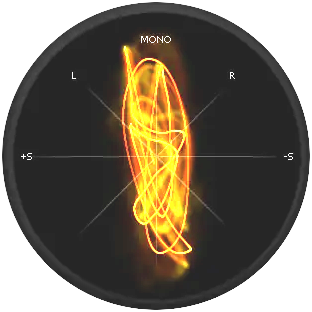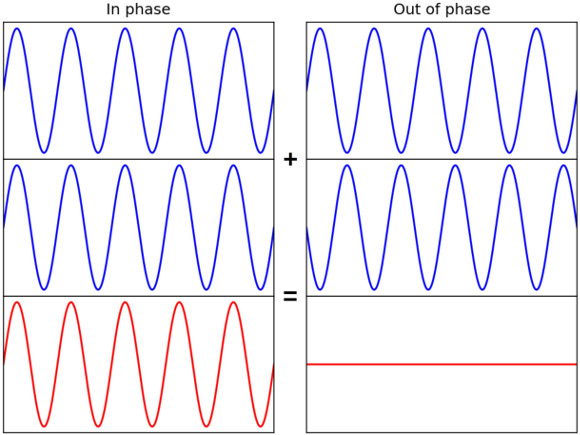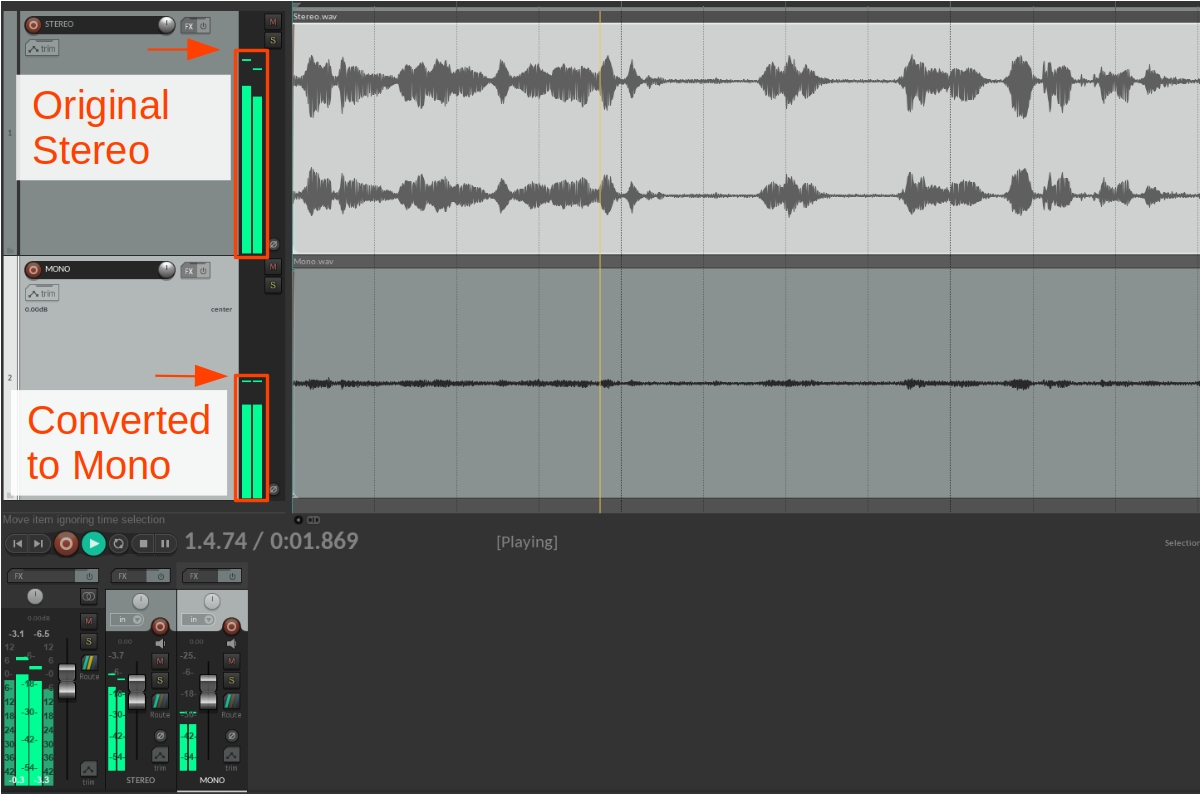Did you ever experience a sudden drop in volume when converting your audio from stereo to mono? Chances are this has happened to you, as mono incompatibility is a common issue with stereo recordings. Auphonic now detects and fixes this for you automatically.
 Phase correlation screenshot of Stereo Tool v3 by flux.
Phase correlation screenshot of Stereo Tool v3 by flux.
Why is mono incompatibility even an issue?
Let’s assume you just published your latest podcast episode. One day later your listeners are complaining about your episode sounding strangely thin and that they need to raise the volume significantly to hear anything. How is this happening, you ask yourself, when you double-checked everything? Well, the reason might be simple: You didn’t check for mono compatibility.
Many of today’s audio devices, like smartphones or small portable speakers, only have one loudspeaker. Having only one loudspeaker means your stereo signal is automatically mixed down to mono. If your stereo signal is mono incompatible however, the downmix will sound thin and nearly silent. Where does this problem originate from?
To the phase and back again
Simply put, mono compatibility problems are caused by phase issues. These are produced during your recording and they depend on your recording setup. To understand the phase of an audio signal, let’s look at the fundamental building block of each signal: a sine wave.
A sine wave represents a “pure tone”, a single oscillating frequency. It contains no overtones or pitch changes, just one frequency. Now let’s assume we have a simple stereo recording with the same sine signal on each channel. What happens if we combine the signals, like we would when converting a stereo recording to a mono recording?
 Left - Two sine signals perfectly in phase.
Right - Two sine signals out of phase.
Left - Two sine signals perfectly in phase.
Right - Two sine signals out of phase.
If the sine signals are in phase, they add up. This means you will hear the same signal, only louder. However, if they are out of phase, they will cancel each other, and the only thing you will hear is silence.
In the real world, we usually don’t listen to pure sine signals. They sound boring and even a bit annoying. Real-world signals are a combination of various audio signals, each with different phases. If you now combine these, as you would in a recording, the result is quite complex, as is the phase. Still, you can take action in your recordings to make sure phase issues do not trouble you.
How to prevent mono incompatibility
Often you will encounter phase issues when you record the same signal with more than one microphone. If you use two microphones to record the same source, the signal may arrive earlier at one microphone than the other. The result is a time delay between the two recordings, which causes a phase difference between them.
As we explained with our two sine signals, when we combine the recordings the phase difference can be constructive (our signals add up) or, worse, destructive (our signals cancel each other). In the latter case, the resulting signal will usually sound thin and have a much lower volume, like in the following example:
Incompatible mono downmix
The best way to fix phase issues is to prevent them during recording. If you choose to record the same signal with more than one microphone, test whether your channels are compatible. Simply make a short recording and convert it to mono while listening (for example, with a mono conversion button in your DAW). If you notice something is wrong with your mono signal, just move one of your microphones a bit or invert its phase and try again.
 Top - A short stereo recording of speech.
Bottom - The same recording converted to mono. Notice the drop in volume.
Top - A short stereo recording of speech.
Bottom - The same recording converted to mono. Notice the drop in volume.
Fortunately, Auphonic now automatically corrects your recording if it is mono incompatible!
Auphonic Mono Incompatibility Detection and Correction
For each of your stereo recordings, we check whether it is mono compatible. If so, we process the original stereo signal with our algorithms.
If it turns out to be mono incompatible, we first fix your recording to make sure it will not disappear in a mono mixdown. We do that by taking only one channel of your stereo signal as a mono signal. This will only result in very minor loss of information because the two channels need to be similar anyway (only with different phases) to even encounter a mono compatibility issue.
Mono Incompatibility in Singletrack Productions
 Incompatibility warning on a
singletrack production status page.
Incompatibility warning on a
singletrack production status page.
Depending on your input-output configuration in a singletrack production, we treat a mono incompatible track the following way:
-
Stereo In -> Mono Out
We take the left channel and process it as usual. -
Stereo In -> Stereo Out
We take the left channel and process only it. Note that the output file for this configuration will be mono.
Mono Incompatibility in Multitrack Productions
 Incompatibility warning for a track on a
multitrack production status page.
Incompatibility warning for a track on a
multitrack production status page.
In a multitrack production, we handle mono incompatibility individually for each track. If we detect an incompatible track, we only convert this track to mono and leave the remaining tracks untouched. This way, you do not unnecessarily lose information in your recordings.
In addition to the warning in your production, you will also receive a warning via email.
Summing up
Mono incompatibility is a common issue in stereo recordings. If you mix an incompatible stereo file down to mono the result can be barely audible. Luckily, this problem can often be avoided through a simple change in your recording setup.
Our tools now automatically detect and fix a mono incompatible stereo track. If we need to apply this fix, we will let you know with a warning message on the production’s status page and via email. Therefore, you can trace back the problem and prevent phase issues in future recordings.
If you’d like to read more about the topic, we recommend this post about how to fix mono incompatibility or this detailed explanation of audio phase and how it can lead to compatibility issues.